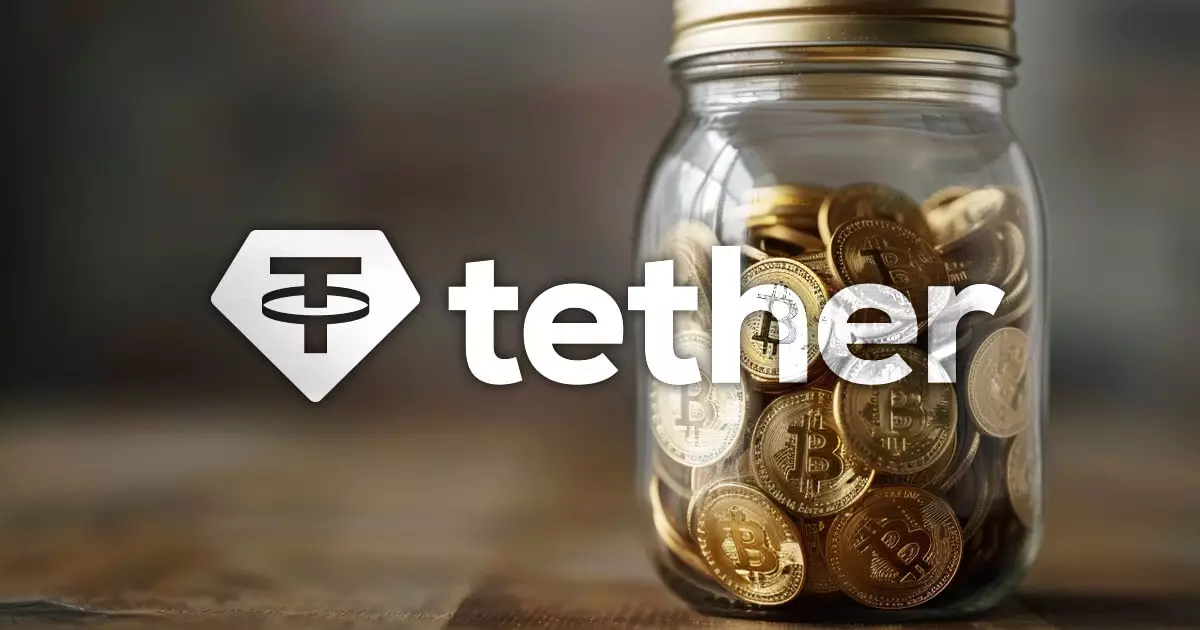In a significant move that has captured the attention of the cryptocurrency community, Tether, the issuer of the USDT stablecoin, has enhanced its Bitcoin portfolio by acquiring an impressive 7,629 BTC, translating to an estimated value of $705 million. This strategic purchase, unveiled through on-chain analytical insights provided by Arkham Intelligence, has increased Tether’s total Bitcoin holdings to a staggering 82,983 BTC, with a current market valuation nearing $7.68 billion. With this acquisition, Tether now ranks as the sixth-largest holder of Bitcoin globally, as noted by data from Bitinfocharts.
Tether’s recent investment aligns with its declared strategy of allocating 15% of its profits towards Bitcoin acquisitions, a plan initially announced in May 2023. This indicative move suggests a deliberate approach to diversify its reserve assets, which include not only Bitcoin but also gold, cash equivalents, and various short-term investments. Each quarter since the announcement, Tether has demonstrated consistent growth in its Bitcoin holdings, highlighting a commitment to strengthening its financial positioning in the volatile cryptocurrency market. This diversification is viewed as a safeguard against market fluctuations, enabling Tether to bolster its overall financial stability.
However, Tether’s aggressive expansion is juxtaposed against substantial regulatory scrutiny, particularly within the European Union. Recent regulations imposed on stablecoin issuers require compliance with strict mandates, including a contentious 30% reserve requirement that calls for assets to be held in traditional financial institutions. Quinten François, co-founder of WeRate, elucidates that such regulations potentially jeopardize operational efficiency. By tying up assets in conventional reserves, Tether may lose the flexibility to utilize those funds for income-generating investments like U.S. Treasury bonds—an essential aspect of Tether’s revenue model.
Moreover, regulatory experts, including Jonathan Galea from BCAS IO, have highlighted the nuances surrounding compliance for stablecoins like USDT within the EU. Notably, Galea points out that USDT may not be subject to MiCA authorization since it’s not actively marketed to the European populace. This suggests a potential pathway for Tether to navigate regulatory challenges while continuing to engage in its strategic investment activities. He emphasizes that the concerns surrounding compliance could be overstated, as trading platforms can freely list assets without necessitating direct promotional efforts from the issuer.
Tether’s substantial acquisition of Bitcoin marks a pivotal moment for its ongoing strategy amid a landscape fraught with regulatory challenges. By actively diversifying its asset portfolio and enhancing its Bitcoin holdings, Tether seeks to fortify its market position and revenue potential. As the firm maneuvers through the evolving regulatory landscape, its decisions will undoubtedly influence future operational strategies and the broader conversation surrounding stablecoin regulations. The cryptocurrency community will undoubtedly be watching closely as Tether continues to adapt and thrive in this complex environment.

